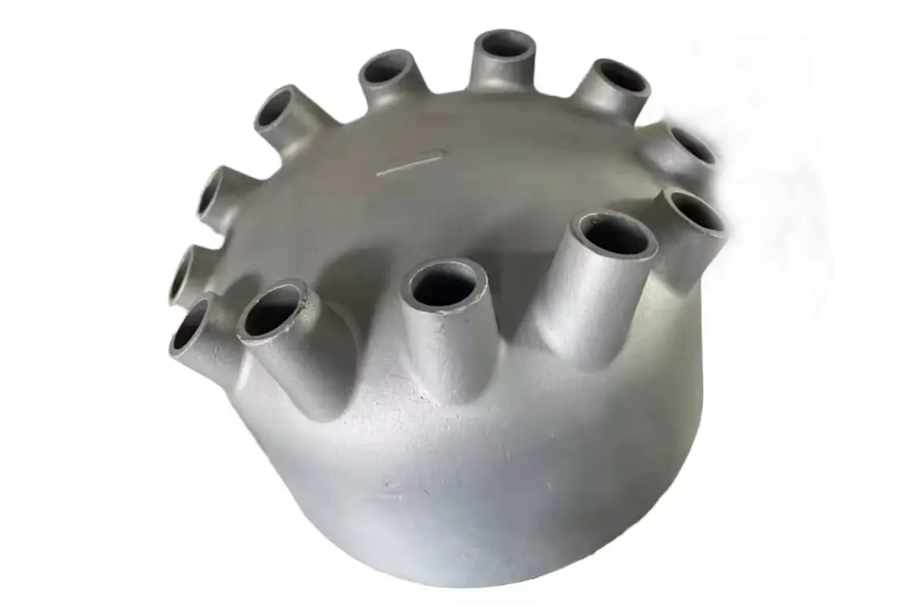Stellite Alloy Nuclear Parts Superalloy Precision Forging Factory
Introduction to Stellite Forged Components for Nuclear Applications
Stellite alloys are vital materials in nuclear systems where wear, corrosion, and thermal degradation pose critical challenges. As a specialized superalloy precision forging factory, Neway AeroTech delivers custom-forged Stellite alloy parts tailored for demanding nuclear environments.
Our precision forging capabilities ensure excellent dimensional stability, fine-grained microstructures, and enhanced fatigue resistance. With a deep understanding of Stellite metallurgy and strict process control, we provide nuclear-grade forged components that meet rigorous industry standards and operate reliably under high-pressure, high-temperature, and corrosive nuclear conditions.
Technical Challenges in Forging Stellite for Nuclear Systems
Producing Stellite alloy components for nuclear applications requires addressing multiple metallurgical and performance challenges:
High-Temperature Strength: Maintain mechanical integrity at operating temperatures exceeding 850°C.
Radiation Tolerance: Avoid embrittlement and maintain structural performance under neutron exposure.
Wear and Erosion Resistance: Preserve surface properties in high-flow or particle-laden coolant environments.
Precision Control: Achieve tight tolerances and fine grain structures through controlled forging and thermal cycles.
Stellite Precision Forging Process for Nuclear-Grade Parts
Billet Preparation & Heating
High-purity Stellite ingots are cut to precise dimensions and cleaned ultrasonically.
Billets are uniformly heated to 1150–1200°C using induction or resistance furnaces under controlled atmospheres.
Closed-Die Precision Forging
Forging performed with isothermal dies under pressures up to 1000 tons.
Achieves dimensional tolerances of ±0.1 mm and improved directional grain flow for mechanical consistency.
Controlled Cooling & Heat Treatment
Post-forging cooling rates tailored to minimize carbide coarsening and maintain toughness.
Final heat treatment refines grain boundaries and enhances corrosion, creep, and wear resistance.
Machining & Inspection
CNC machining ensures final part geometry with tolerances as tight as ±0.01 mm.
Ultrasonic, dye penetrant, and hardness testing validate structural integrity and consistency.
Manufacturing Method Comparison for Nuclear-Grade Stellite Parts
Method | Dimensional Control | Microstructure | Wear Resistance | Creep Strength | Radiation Resistance |
|---|---|---|---|---|---|
Precision Forging | Excellent (±0.1 mm) | Fine-grained | Outstanding | High | Excellent |
Casting | Moderate (±0.3 mm) | Coarse-grained | Good | Moderate | Moderate |
3D Printing (SLM) | High (±0.05 mm) | Variable | Moderate | Moderate | Low to Moderate |
Stellite Grades for Forged Nuclear Components
Material | Hardness (HRC) | Yield Strength (MPa) | Max Temp (°C) | Radiation Resistance | Nuclear Application |
|---|---|---|---|---|---|
42–45 | 720 | 850 | Excellent | Valve stems, bushings | |
30–40 | 700 | 820 | Excellent | Control rod sleeves, bearings | |
56–60 | 970 | 950 | Good | Pump seals, guide bushings | |
53–58 | 920 | 870 | Moderate | Valve trim, pressure discs |
Material Selection Strategy for Nuclear Forging Applications
Stellite 6B: Best suited for forged bushings and stem components requiring low wear, excellent corrosion resistance, and dimensional stability at 850°C.
Stellite 21: Chosen for sleeves and dynamic wear parts due to superior ductility and good radiation tolerance under cyclic thermal stress.
Stellite 1: Applied where maximum hardness (up to 60 HRC) and resistance to erosion are needed, especially in pressurized reactor coolant circuits.
Stellite 3: Preferred for trim components and static load-bearing parts due to its balance of hardness and moderate radiation durability.
Post-Processing and Quality Assurance for Forged Stellite Parts
Heat Treatment: Refines carbide distribution and grain morphology to optimize wear and fatigue resistance.
Hot Isostatic Pressing (HIP): Optional densification step when defect-free microstructure is required for pressure boundary components.
CNC Machining: Ensures tight geometry control and surface finishes under Ra 1.6 µm for sealing and sliding surfaces.
Material Testing: Includes microhardness, ultrasonic, metallography, and SEM for structural verification.
Case Study: Forged Stellite 6B Valve Sleeves for Pressurized Water Reactors
Neway AeroTech produced a series of forged Stellite 6B valve sleeves for use in PWR (Pressurized Water Reactor) primary coolant systems. The forging process ensured directional grain flow, refined carbides, and minimal porosity. Final heat treatment enhanced wear resistance and corrosion protection.
The components achieved hardness of 44 HRC, dimensional tolerance within ±0.05 mm, and passed ultrasonic inspection and SEM microstructure review. Service life was extended by 50% compared to cast alternatives under full operational radiation and pressure conditions.
FAQs on Stellite Forged Components for Nuclear Applications
What forging tolerances can you achieve for Stellite alloy nuclear parts?
Which Stellite grades offer the best radiation and erosion resistance?
Do you provide post-forging heat treatment and HIP for nuclear components?
What testing and inspection standards do your nuclear parts comply with?
Can you supply forged valve stems, sleeves, and bushings for nuclear applications?

